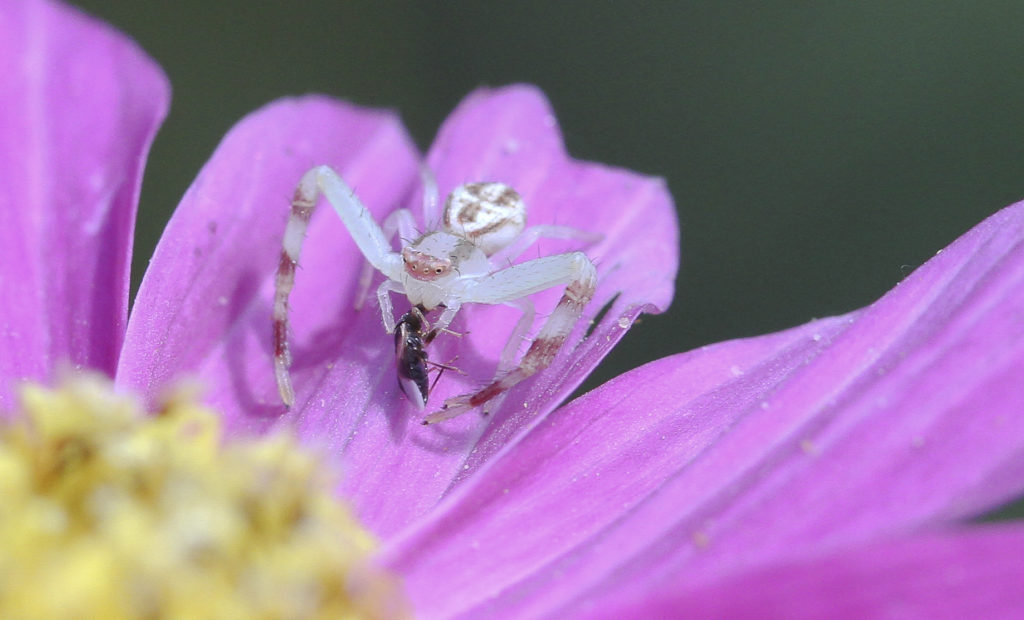Crabs in Your Flowers?

By Wayne Bierbaum
According to Maryland’s Biodiversity Project, of the some 3,000 species of spiders that live in North America, 271 have been found in Maryland. Only two are dangerous to humans, the black widow and the brown recluse.
As I walk through my yard, I look carefully for spiders. I particularly like finding jumping spiders because they look like they have intelligence and attitude. One in particular seems to recognize me and is curious about my movements without hiding. However, since summer flowers are here, I have spotted a real sneaky spider hiding in their petals: the flower crab spider.
Flower crab spiders are named because of their appearance. Their long front four legs are curved in a forward manner, looking like crab pinchers. They are ambush predators and hide in the inner parts of plants, especially flowers, to grab flies, butterflies and other bugs. Crab spiders come in multiple colors and seem to try to match the flowers they live on. The spiders can detect the color of the plant or flower it is on and add or subtract pigments to make a better match. This process takes about three days. They will also move to the part of the plant that best matches their coloring. I have seen crab spiders that are reddish, white, yellow and multi-colored.
The crab spider does not use a web to catch or subdue prey but females will leave a silken trail for males to follow. She will also make a webbed egg case and protect it and later, the newborn spiders. However, like Charlotte in Charlotte’s Web, the females die soon after the young are born. In late fall, an egg case will be laid in a protected area and the young will not emerge until the following spring or early summer. In Maryland, none of the adult crab spiders survive the winter.
The most common flower crab spider we have in this area is the goldenrod crab spider (Misumena vatia). They are generally yellow or white and frequently have a maroon stripe on both sides of its abdomen. They are found on almost any plant but tend to prefer yellow or white flowers. They evidently have potent venom because their prey does not struggle long after it is grabbed and bitten. The spiders will attack bugs several times its size and weight and anchor itself to the plant as it hangs onto its prey. The spiders are themselves preyed upon by birds, lizards and other spiders. In my yard, I have a family of Carolina wrens that really seem to like the crab spiders.
Be on the lookout for these small devious arachnids. Unless you are spraying your plants with insecticides or spraying the yard for mosquitoes, there may be many of these ambush spiders acting like a crab around your flowers. They are harmless to humans and fun to find.
